“It is the first I purchased, and the oldest.”

VFC says: Please enjoy this guest post by Matt C.!
This guest post discusses an item of cookware less common in the annals of Vintage French Copper, a saucepan of rolled rim construction that is neither vintage nor French. This saucepan is also unique to my collection because it is the first I purchased and the oldest.
I’ve been collecting antique and vintage metalware including kitchenalia since my youth but only purchased my first copper cookware about half-a-dozen years ago. The saucepan in question was hanging in a local bric-a-brac store with a large vintage, early twentieth century 6-litre saucepan from Skultuna Sweden (Skultuna incidentally was founded in 1607 and continues to this day). I purchased the pair for $AU50 ($US35).
My saucepan has a diameter of 26 cm, height of 9.5 cm and weighs 1670 g. The rim is rolled over a presumed iron ring and has a 1-mm thick sidewall below the rim. The interior has been tin-lined.

There is a divot in the centre of the underside of the base, showing the coppersmith used a compass to mark out the radius of the circle of copper cut from a flat sheet to form the pan.

The handle is wrought from an approximately 11-mm-thick copper bar or rod with a heart shaped flared end fixed to the pan body with three copper rivets and a pierced hanging hole at the end. Streaks in the copper show where the coppersmith has wrought the bar.

The handle is stamped with an embossed “touchmark” or “foundry mark” near the body of the pan. This is the “Three Towers” heraldic symbol for the city of Copenhagen, Denmark, which was granted the coat of arms in 1661 by King Frederick III of Denmark.

The towers represent the castle of Absalon, which stood in mediaeval times where the royal palace of Christiansborg now stands. The heraldic escutcheon is topped by the indistinct initials of the maker, perhaps “DP”, and has the date “1795” below, probably dating the foundation of the workshop. I cannot identify the maker and curators at the National Museum of Denmark in Copenhagen advise eighteenth century copper marks are poorly-documented.

Danish silver is hallmarked with the same “Three Towers” over three wavy lines signifying the three seaways flowing between the main Danish islands. The fineness or purity of the silver as a percentage out of one hundred is embossed in the middle of the waves. Below at left is a silver hallmark from a late nineteenth century Danish berry spoon in my collection of fineness 83 – 83% purity. Vintage Danish copperware sometimes bears a similar touchmark to the Danish silver hallmark. A mid-century copper samovar from my collection has the touchmark below at right.


I have found online similar dated touchmarks to that on my saucepan on other antique Danish copperware, including those depicted below. Two are from near identical copper pots with the touchmark initials AB over the three towers and the date 1812 below. These are by A. Bergstrøm who had the contract to supply such mess pots to the Danish Royal Infantry. The stamped numbers below (N:145 and N:297) presumably identified the infantryman.


 A third example, shown at right, has indistinct initials over the three towers and a date in the 1760s.
A third example, shown at right, has indistinct initials over the three towers and a date in the 1760s.
The Danes have a rich metalworking history in gold, silver, copper, pewter, and steel, with the silversmith Georg Jensen perhaps the most famous artisan. Danish metalware has a reputation for quality and simplicity of design. This is exemplified by two vintage twentieth-century Danish copper beer measures (1 litre and 330 millilitre capacities) I have, which exhibit both exceptional craftsmanship and purity of form. They also preserve some of the design and technical legacy of my eighteenth century pan. Rims are rolled over probable iron rings. The handles are thick copper (6-mm-thick on the largest) with flared, heart-shaped flanges affixed with copper rivets (three per flange on the largest, one on the smaller). Interiors are tin-lined. The 1 litre measure is 16.5 cm tall by 11 cm diameter and weighs 1220 grams, with the smaller of 12 cm height, 8 cm diameter and weighs 640 grams.

They are formed from seamless cylinders of 2-mm-thick copper, plugged with soldered bases. Compass divots show these plugs were measured the same way as the pan base.

How did two Scandinavian saucepans with manufacture separated by perhaps a century end up together 17,000 km away in a junk store on the Pacific Coast of Australia? Small numbers of Danish and Swedish immigrant farmers settled in the region over the second half of the nineteen century and it is possible that the pans arrived with such settlers.
VFC says: Matt, thank you so much for this wonderful showcase. These pieces are beautiful and I am so glad they found their way to you, so far from the place and time they were made. I also want to express my appreciation for the attribution to Denmark — as you note, this is a region of coppercrafting about which I have little knowledge. I am so grateful to you for introducing us to Danish copper cookware and for providing history and useful information about the markings.
A question for you and the readership in general: I often see unmarked pieces like your saucepan with a similar handle style: all-copper construction, a heart-shaped baseplate, and a long slender handle shaft. The workmanship is clearly of the antique era and I have heard them attributed to Russia or Eastern Europe. Could this handle style be instead a Scandinavian design element?
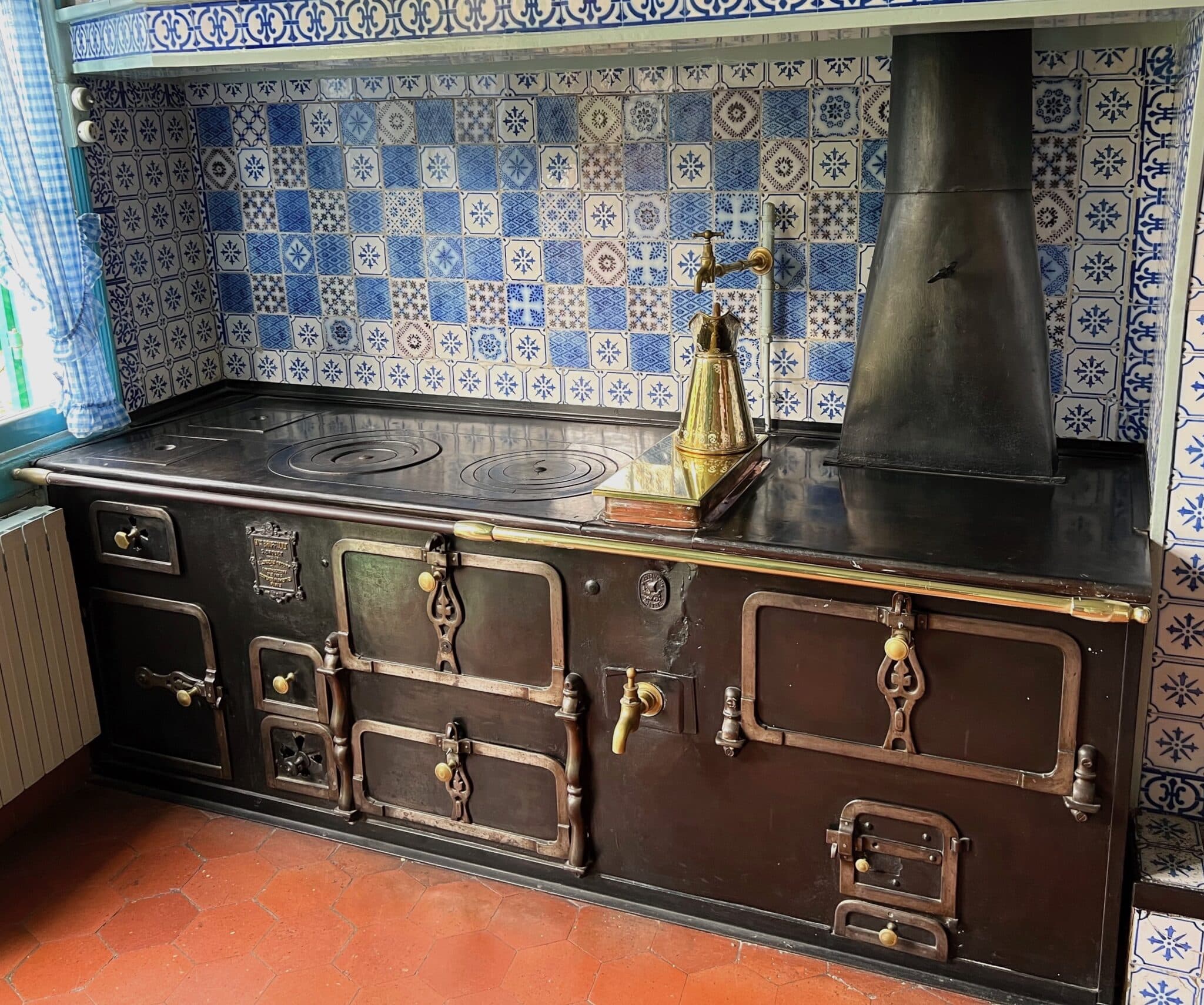
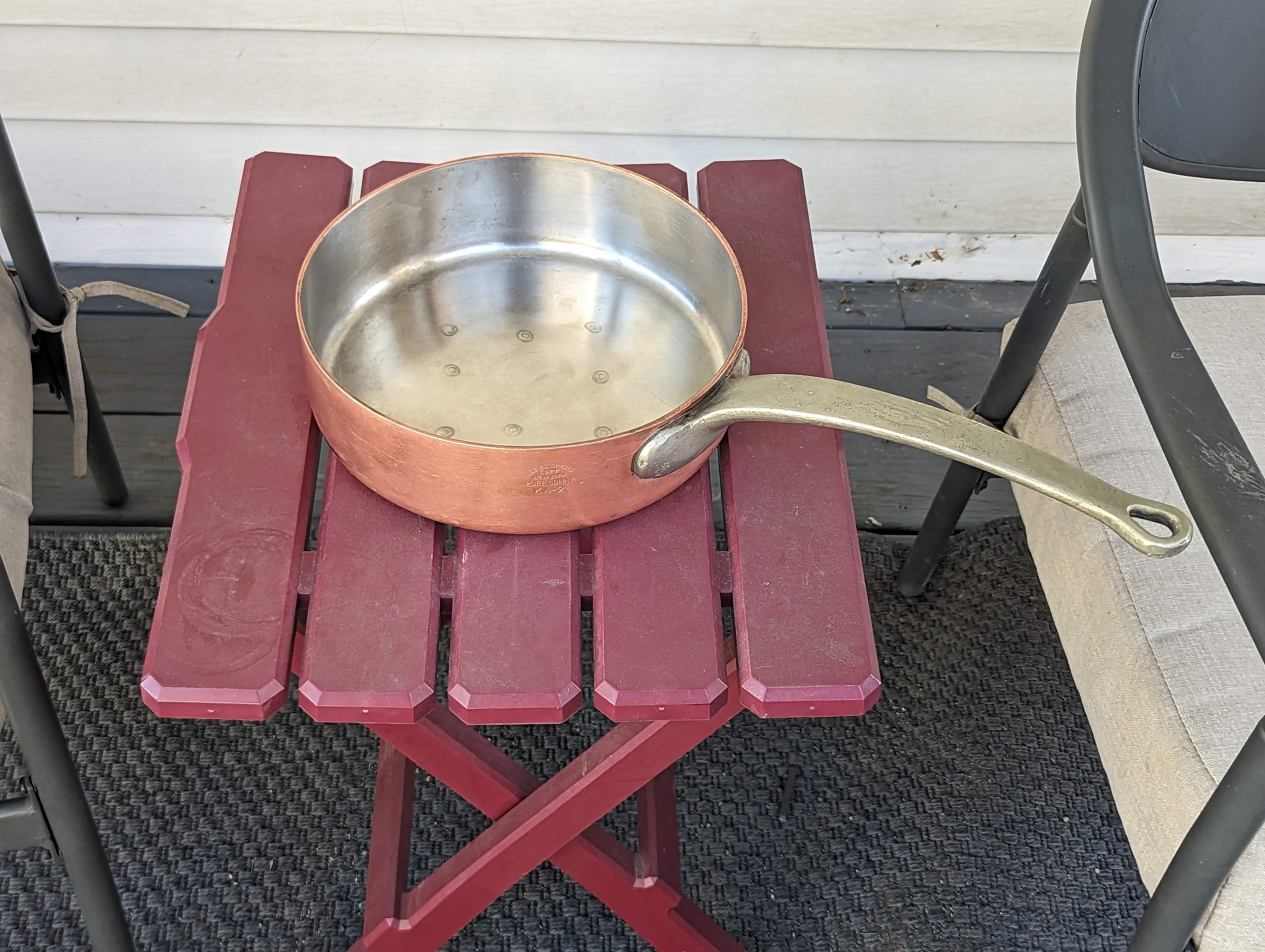
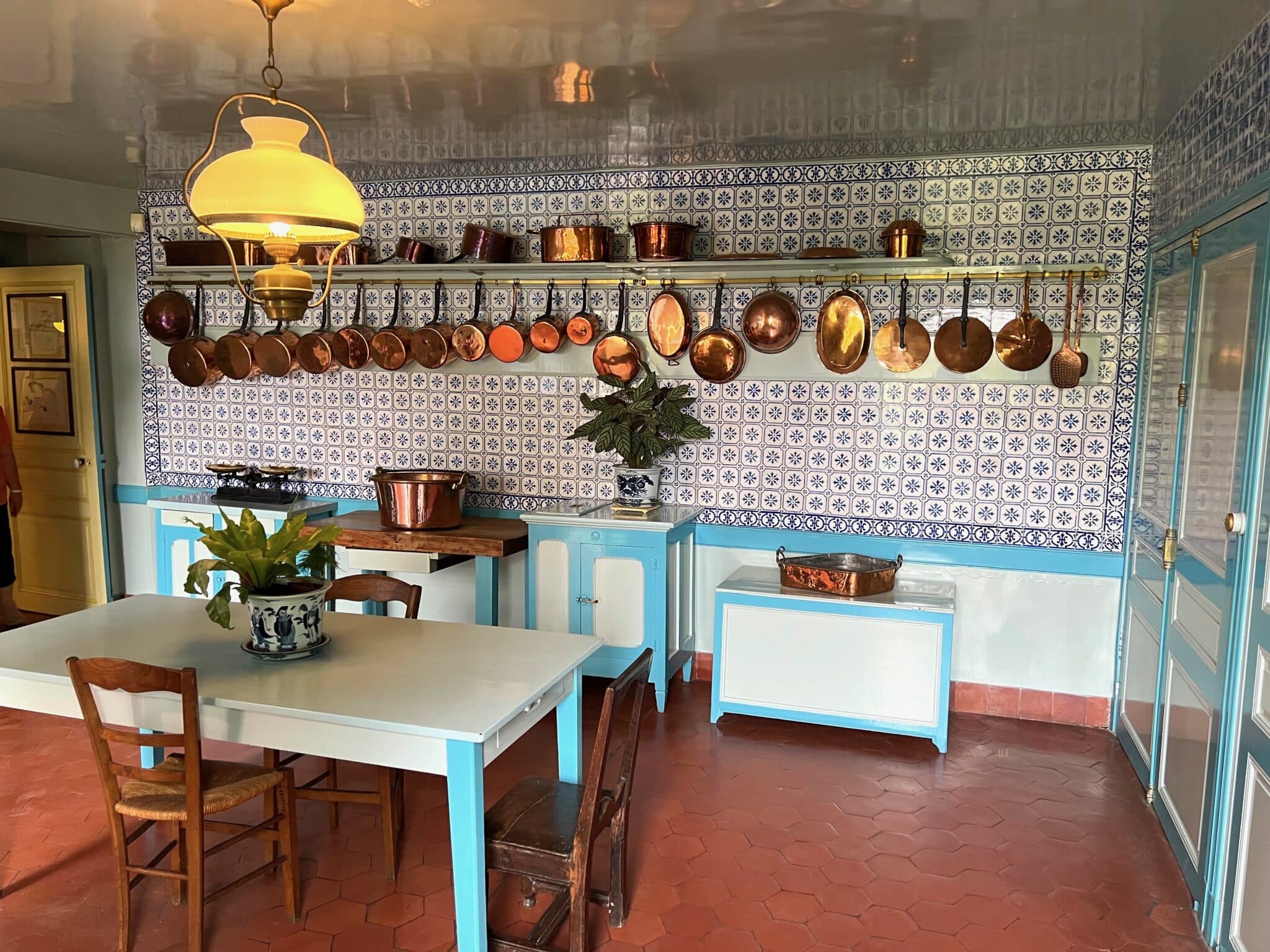
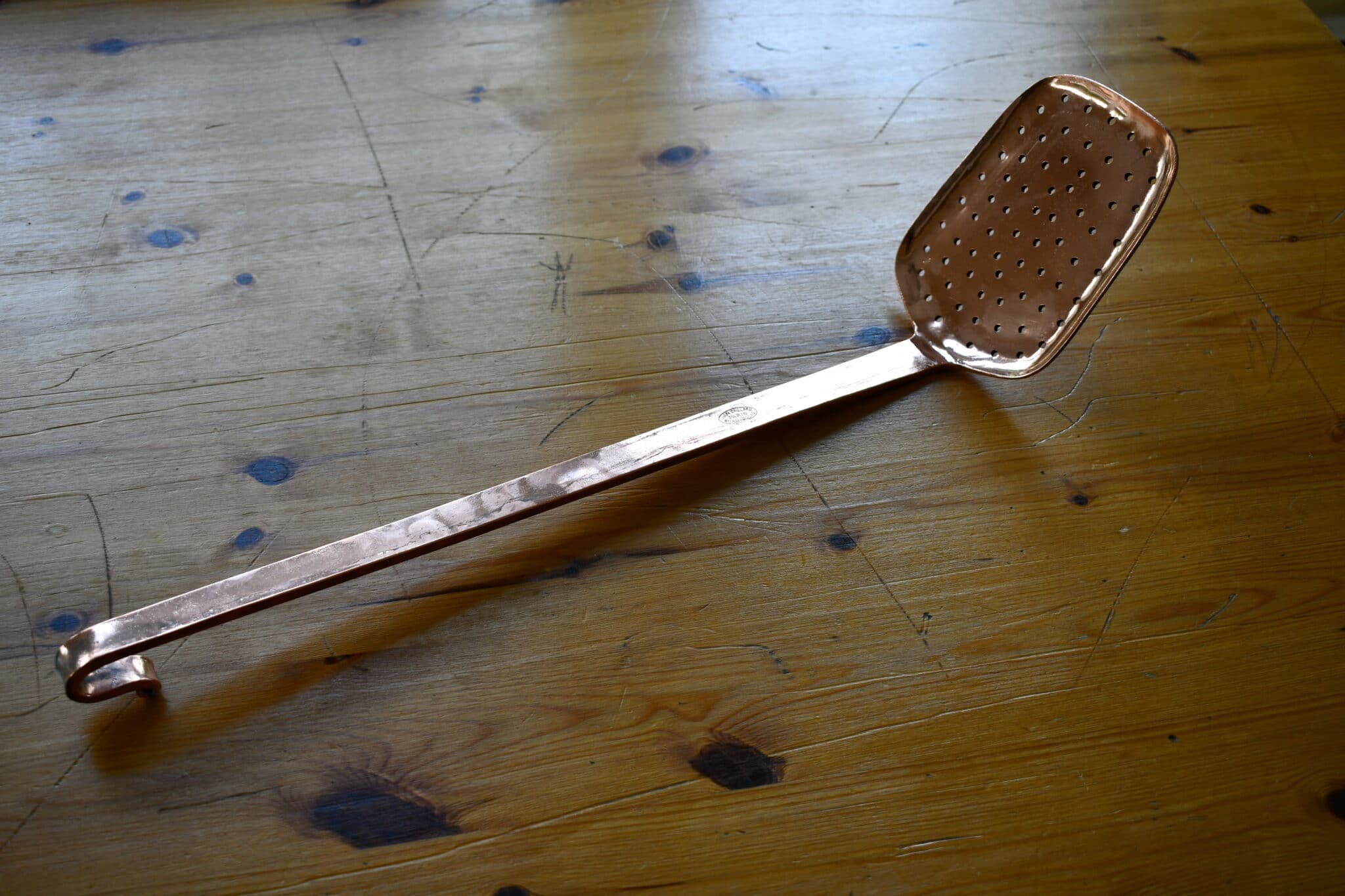
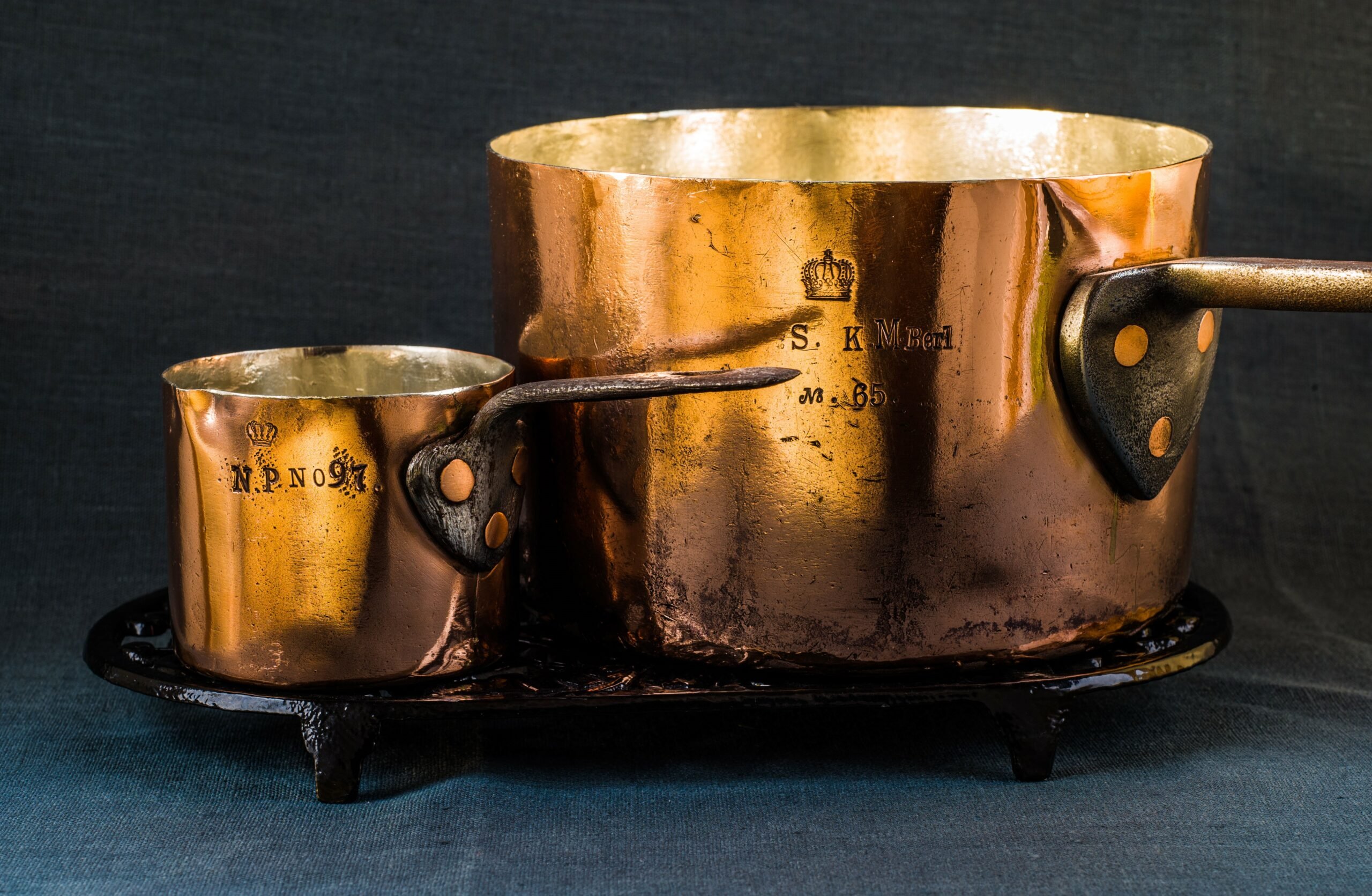
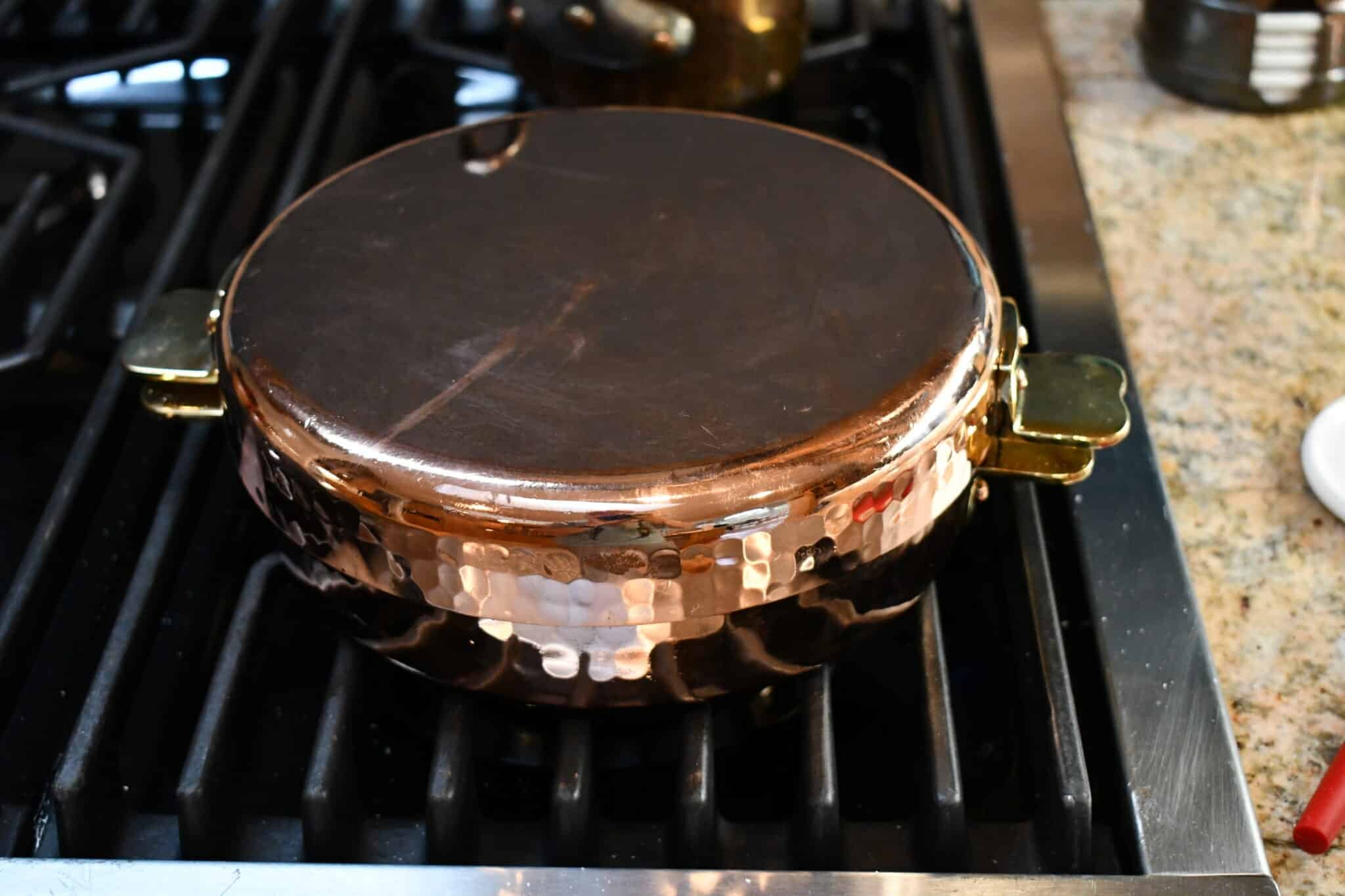
I’m glad to see that a Scandinavian country is now represented at VFC. Thanks Matt and VFC for the presentation.
The longer I look for copper pans, the more often I see these slightly heart-shaped handle plates on handles made of brass, possibly also copper. First I found them in Eastern Europe (Poland, Czech Republic, Austria and Hungary), later also on pans from German kingdoms. At some point I saw them on Swedish pans. They also appeared occasionally in Spain. What all these pans had in common was that they were very old and had been made mostly before 1850, some probably in the 18th century. So these pans were still made entirely by hand in a coppersmith’s workshop. I can well imagine that these plain handles made from a strip of sheet metal could also have been shaped by the coppersmith himself. The effort for forged handles was already much greater, so that the production probably already took place more often in other workshops. In the course of industrialization and thus specialization and mass production, more and more subcontractors developed, also for handles made of wrought and cast iron. Prices became cheaper, demand could be met quickly.
The heart shape is a popular motif that can be found in an infinite number of products. Who invented the design of the heart-shaped support plate, you will not be able to find out after this long time. There were also fairs and markets in earlier centuries where craftsmen presented their products. It was just as difficult to protect an idea from imitators as it is today. The production of window glass is due to the Venetian glassblowers. But a French king gave the order to lure some of these masters to Paris with large sums of money. In doing so, these “traitors” risked their lives. One did not even shy away from murders to be able to establish this type of glass production in France. A similar thing happened with the English weavers, their cloths and their machines. Traveling merchants spread the goods all over Europe and with them the designs and other news. Ultimately, you can not even rule out that the idea for the heart-shaped handle came from an Arab country or even from China via the Silk Road. Who knows? 😉
Thank you for your insights, Martin. I had initially thought Eastern European for this pot until I identified the touchmark. VFC has written about a saucepan by Warsaw coppersmith Adolph Witt with copper handle affixed with heart shaped flange too. I wonder if there’s a trans-Baltic link in the transfer of stylistic and technological information as well.
Your comments about attempts to protect knowledge are interesting. The experimentation with Chinese porcelain technology in Europe over the late seventeenth and early eighteenth centuries is an example. Rulers incarcerated artisans to prevent knowledge spreading and preserve their commercial and political advantage.
Matt, thanks again. Unfortunately, I don’t know where this design feature originated either. I only know that it spread throughout Europe. Certain designs and fashions suddenly become “in” or “hip” out of nowhere and spread rapidly.
In earlier centuries, the craftsmen’s guilds of the great cities of Europe supervised and protected their members. The rules were extremely strict and the market was regulated accordingly. Technologies remained “in the family,” so to speak. Violations were subject to drastic penalties. Who invented the spaghetti that one spontaneously associates with Italy? Apparently the Chinese, but who exactly among the millions of people will never be known. It is believed that Marco Polo brought the recipe back from his long journey to China and revealed it to the Venetians. But an infinite number of merchants traveled on the Silk Road or by ship. There was also a variant of letterpress printing in China, long before Johannes Gutenberg, with his variant triggered a revolution in Europe and worldwide. America, as we know today, was not discovered by Columbus, but much earlier by the Vikings. But it was actually the indigenous peoples who first settled this continent, presumably from Asia. Mankind was always on the move. Already in the early times of history there was lively trade from Scandinavia to Egypt. This is proven by numerous archaeological finds. I could cite numerous examples.
But how does one want to protect stylistic features? As can be seen from the legal disputes, for example, between the major suppliers of cell phones worldwide, this does not seem to be easy. Design features of cars are copied in a very short time and adopted with small variations by other manufacturers. Today, this is called industrial espionage.
Technology can be better protected by securitized patents. One example from our field of interest was the Europe-wide patents of the German manufacturer Gebr. Schwabenland, which had its distinctive reinforcing rings at the top and bottom of the pans and a special type of tinning protected. I am not aware of any copies of these technologies by other manufacturers. But patents have a limited validity. After this time expires (usually 10-15 years), anyone can adopt this technology. Makes sense too.